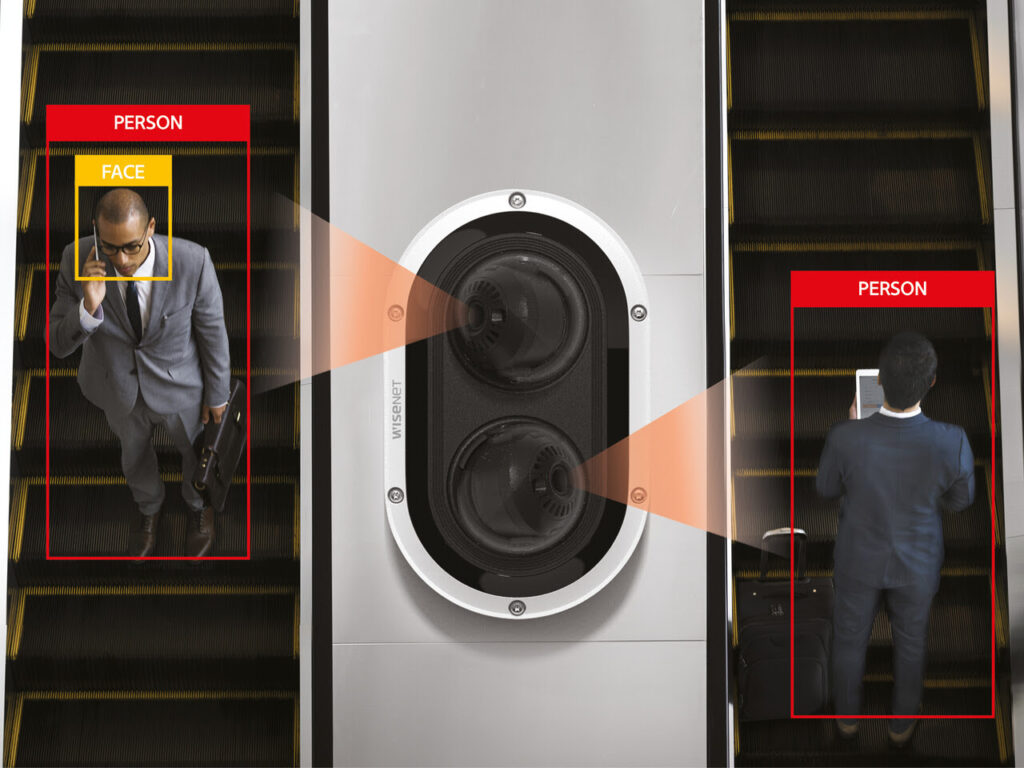
A new AI-powered dual-channel multi-sensor camera from Hanwha Techwin can monitor two different areas with two different fields of view, making it ideal for monitoring stairs, escalators, L-shape corridors, and checking-in desks that are adjacent to one another.
As a result of their highly accurate deep-learning-based object detection and classification, the two-in-one cameras offer a lower total cost of ownership (TCO) compared to installing two equivalent cameras. In addition to offering lower hardware costs, they are faster to install, use a single cable, and often require only one VMS licence. The PNM-C12083RVD comes with two 6MP cameras at 15fps, while the PNM-C7083RVD has two 2MP at 30fps. The two devices can view infrared light at a distance of up to 25 meters, are certified FIPS 140-2, have an IR (infrared) viewable range of up to 25 meters and are compliant with the NDAA.
Operational efficiency
AI-based object detection reduces the occurrence of false alarms, providing operators with a reliable source of events, while accurate object classification improves operational efficiency by making forensic searches highly efficient. The cameras can detect human faces and identify particular vehicles and number plates while ignoring irrelevant motion such as wind-blown trees, shadows, stray objects, or animals moving within the field of view.
Dual-channel cameras incorporating BestShot technology are being used for post-event analysis to ensure that operators can see the best shot of a particular event immediately after it occurs. To conduct an efficient forensic search in the event of a crime, video-generated metadata (person, face, vehicle, and license plate), is embedded in the video and delivered back to the control room so that a capable video management system can carry out the search.
Enhanced image quality
AI also enhances the image quality of video delivered back to operators. WiseNR II noise reduction uses AI to identify object movement and reduce blur in noisy, low-light environments. AI-based Preferred Shutter technology automatically adjusts shutter speed based on classified objects in motion and the lighting conditions to reduce motion blur and deliver the clearest images possible.
WiseStream III dynamically controls encoding so that when a classified object is detected, the compression rate on the area is minimised to improve image quality, while the rest of the scene is compressed at a higher rate. Combined with H.265 compression, the bandwidth efficiency can be improved by up to 75% compared to the current H.264 technology.

